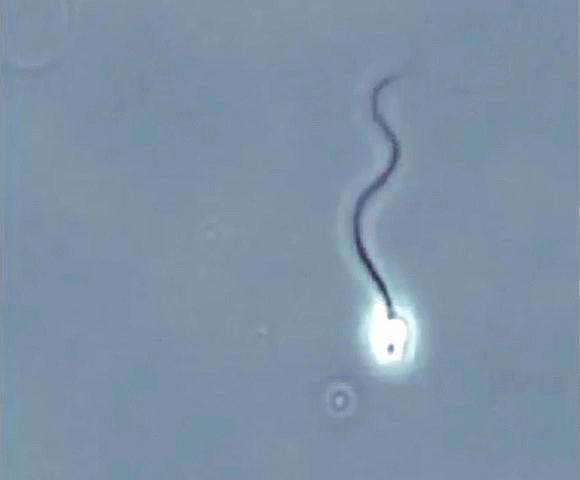One in seven couples sadly struggles with infertility – defined as failing to conceive after trying for more than 12 months. Approximately one third of these cases are due to problems with the man, another third are down to the woman and the last third are due to a combination of both partners. Although we don’t understand the cause of male infertility in the majority of cases, we do know there is a small genetic component.
Since 1959, we have known that an extra X chromosome in men (XXY instead of XY, also known as Klinefelter’s syndrome) is associated with low sperm production and infertility. This is now recognised as the most common genetic cause of infertility. For a long time, scientists have pondered whether we can’t just delete the extra sex chromosome in these individuals to enable normal sperm production. But this has been considered a purely theoretical and fanciful idea – until now.
A new paper, published in Science, shows it is indeed possible to delete the extra sex chromosome and produce normal, healthy fertile sperm in mice. The research is really quite remarkable. It raises hopes for restoring fertility in those living with other chromosomal abnormalities, too.
Klinefelter’s syndrome is relatively uncommon, affecting between one in 1,000 to one in 1,500 men. The extra X chromosome appears to have a relatively minimal impact on body tissue, but it can cause weaker muscles, smaller genitals, lower libido and breast growth in male individuals. For reasons that we don’t yet fully understand, it has a profound negative effect on the development of germ cells – the sperm and eggs – and subsequent sperm production and fertility. Men with Klinefelter’s syndrome have reduced testicular function and generally produce no or few sperm.

Prior to the advent of ICSI (Intracytoplasmic sperm injection) – a procedure in which a single sperm is injected directly into an egg – these men were sterile. However, with the ability to recover a few sperm from the ejaculate or the testicles and inject these into eggs, scientists managed to successfully create an embryo using sperm recovered from an XXY patient in 1995. Subsequently, there have been over 120 such births.
Deleting chromosomes
When turning tissue from the ear of XXY (and XYY) mice into connective tissue knows as fibroblasts and subsequently into stem cells (cells that can produce indefinitely more cells), the scientists behind the new research noticed that some of the cells lost the extra sex chromosome. They also showed that this kind of chromosome loss happens when reprogramming human cells that have three instances of a particular chromosome, instead of the normal two.
Subsequently, they developed an experimental cocktail to produce germ cells from these stem cells in a lab dish. However, to produce fully functional sperm it was necessary to place these germ cells into the testicles of a male mouse. Remarkably, these sperm were fertile. When injected into eggs, they created healthy, fertile offspring free of the chromosomal abnormality.
The research boosts hopes that men with Klinefelter’s syndrome, for example, would be able to produce sperm and healthy offspring in cases where they don’t actually produce any sperm. The researchers showed similar chromosome loss in mice with the equivalent of Down’s syndrome. This is exciting, as men and women with Down’s syndrome tend to have lower fertility and have a high risk of their children having Down’s syndrome, too. In fact people with a number of genetic conditions that are associated with infertility may one day be helped by the technique.
There are a number of substantial challenges to overcome for this to be realised in humans. The toughest one will be to produce functional germ cells outside the human body. We are still very much at the early stages of understanding these processes.

It will also be challenging to determine when to start human experiments. In the UK, we have a strict but permissive legislative framework for generating human embryos for research. As such, under research procedures, we would have to determine the viability, genetic and epigenetic profile of a blastocyst (a structure of cells formed in the early development of the fetus) created from germ cells in the lab. As long as these are normal then the next steps are to proceed to implantation of the embryos into the woman.
We are undoubtedly a long way from achieving this, but truly breath-taking progress is being made in the area of stem cell and germ cell biology. Coupled with a highly efficient reproductive medicine scene and permissive regulations, we are well placed to address the challenges of translating this exciting research into humans.

